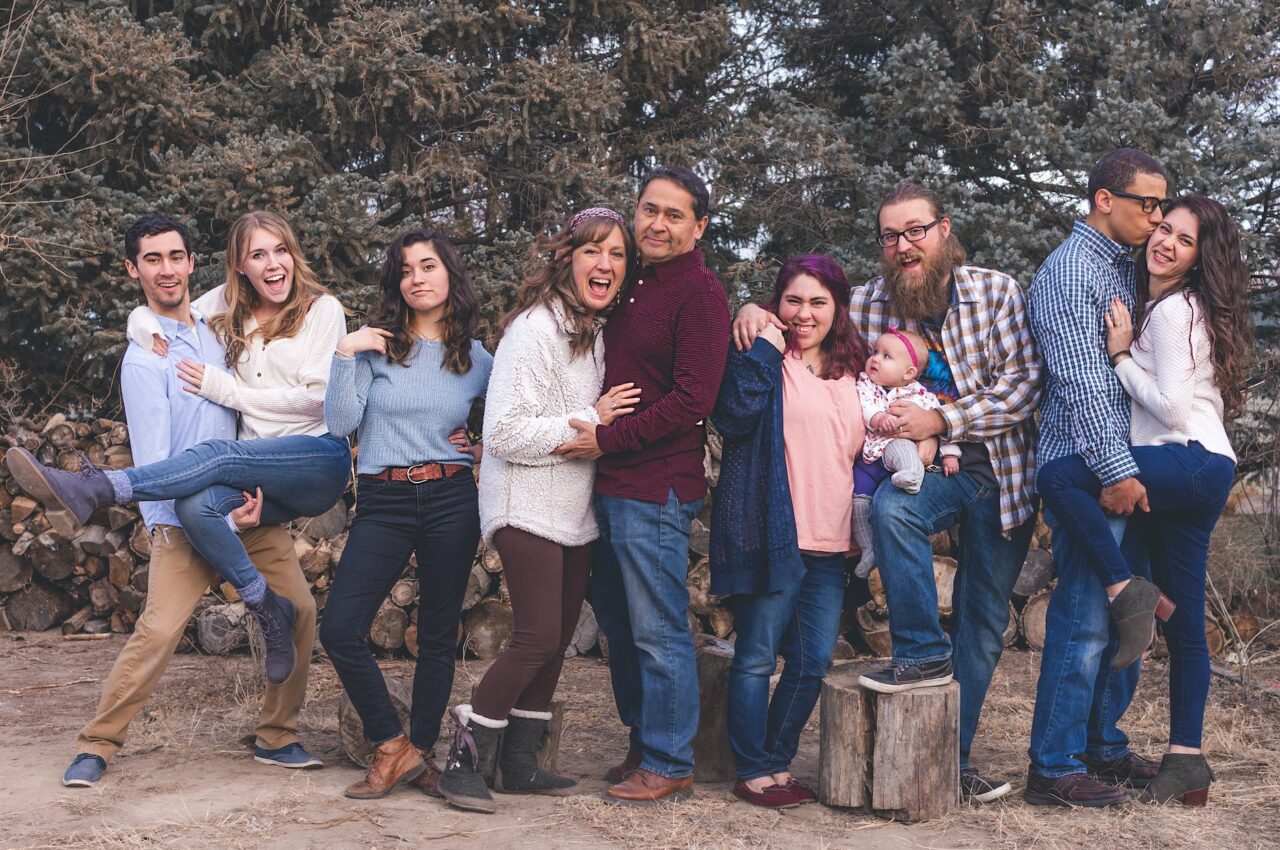
The large family: a double-edged sword
Find out more about this survey published in Le Cercle Psy magazine. In the media and in the movies, the model of the large family offers an idealistic image, marked by laughter, spontaneity and exchanges between children. But behind this seductive picture lies a more nuanced reality.
At a gala event organized by Melinda and Bill Gates in New York, Emmanuel Macron put his foot down. During a speech on African development, he declared: « I always say: present me the lady who decided, being perfectly educated, to have seven, eight, nine children ». Immediately, Internet users began to attack the President on social networks, accusing him of stigmatizing large families: « my mother, a graduate of Sciences Po, had 8 simpleton children like her, since I entered the ENS at 18 – 8th in France in the competitive entrance exam that you failed twice ». If the model of the large family[1] was once valued, it is now more subject to criticism, to the point where it has been declining for several decades. Let’s take a look at the positive – and also more mixed – aspects of such a lifestyle.
Early socialization
Due to their parents’ lack of availability, children from large families are quicker to gain autonomy (such as dressing themselves or setting the table). Elders, for their part, develop special skills in caring for young children, especially girls. In some families, this role of « second mother » can be very gratifying and encouraging. What’s more, the constant presence of other children is a welcome form of social stimulation: « I had my friends at school, and things went really well with them, but I never really invited them home (…) I always felt that the family was enough (…). I was happy at home »[2]. But make no mistake, a large number of children doesn’t necessarily mean that siblings get on well together. That would be too simple! Arnaud Régnier-Loillier, Doctor of Sociology and researcher at the Institut National d’Etudes Démographiques (INED), points out that the quality of relationships with siblings depends on « the rank of the siblings, the age of each or, more generally, the wider family environment – such as the quality of the relationship between the parents or the household’s standard of living, for example ».
Material restrictions at the root of family tensions
The quality of life of children from large families depends in part on the material living conditions in which they grow up. A point closely linked to the parents’ social background. Having to live in the same room, not going on vacation often for lack of money, not having enough individual presents… can be the source of family tensions. « Bérangère describes a tense relationship with her half-sister Lucille, with whom she shared a room (…). She monopolized the space, taking up three walls out of four for her posters and appropriating more storage space for herself, » report Martine Court et al (2015). Another disadvantage of large families has been widely established by sociological research: children have less chance of social mobility, whatever their background. In smaller families, with two or fewer children, one child in four would become an executive on average. In families with three or more children, this prevalence falls to 14%. How can this be explained? Parents may be less able to follow each of their children at school, due to lack of time and/or resources. Sharing a bedroom also has a negative impact on academic success. A large number of siblings would also induce a more rigid parenting style, which would be less conducive to children’s intellectual development. Research published in 2015 concludes that an increase in the number of siblings is associated with a decrease in parental investment per child, a weakening of children’s cognitive abilities (especially girls) and, at the same time, an increase in behavioral problems (especially boys)[3]. It’s worth noting that families from poor socio-economic backgrounds are even more affected by all of these reported harms.
According to the many testimonials gathered by the Union Nationale des Associations Familiales (UNAF), the transition from the third to the fourth child is particularly arduous because it involves a reconfiguration of family life, starting with an urgent change of car! A fact to ponder before embarking on the adventure.
According to INSEE figures, one in six large families is a blended family, four in six are traditional families (where the children have the same parents) and one in six is a single-parent family.
Demographic research points to a fact that has remained stable over time: children from large families tend themselves to want more than one child, whether in France or other countries. Sociologists describe this phenomenon as « intergenerational reproduction of behavior ». However, it is interesting to note that, on average, children want fewer children than their own parents have had. This effect is more pronounced among women than men[4].
[1] By « large family » we mean a family with at least three children. These families now represent 21.5% of all families.
[2] Testimonial taken from the article by Martine Court et al (2015).
[3] Chinhui, J. et al. (2015). The Quantity-Quality Trade-off and the Formation of Cognitive and Non-cognitive Skills. NBER Working Paper, No. 21824.
[4] Source: Martine Court et al (2015). When young people from large families consider becoming parents: the influence of primary socialization on the number of children desired. Enfances Familles Générations, 206-222.
